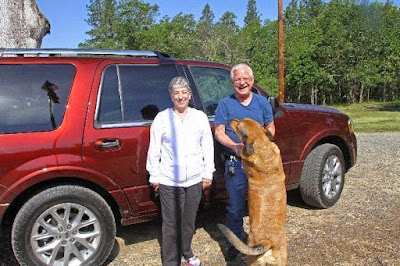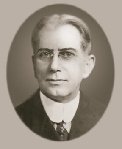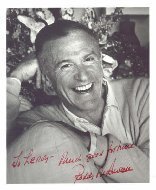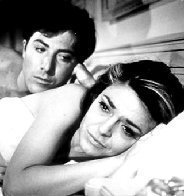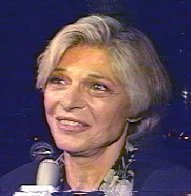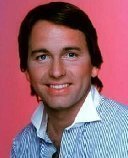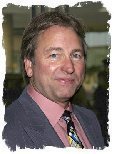Downtown Los Angeles (DTLA) contains the central business district of Los Angeles, California. In addition, it contains a diverse residential area of some 85,000 people, and covers 5.84 sq mi. A 2013 study found that the district is home to over 500,000 jobs. It is also part of Central Los Angeles.
Downtown Los Angeles is divided into neighborhoods and districts, some overlapping. Most districts are named for the activities concentrated there now or historically, e.g. the Arts, Civic Center, Fashion, Banking, Theater, Toy, and Jewelry districts. It is the hub for the city's urban rail transit system plus the Pacific Surfliner and Metrolink commuter rail system for Southern California.
Banks, department stores, and movie palaces at one time drew residents and visitors of all socioeconomic classes downtown, but the area declined economically especially after the 1950s. It remained an important center—in the Civic Center, of government business; on Bunker Hill, of banking, and along Broadway, of retail and entertainment for Hispanic Angelenos, especially immigrants. Now Downtown has been experiencing a renaissance that started in the early 2000s. The Crypto.com Arena anchors downtown's south end, and along Broadway, pre-war buildings are being restored for new uses, such as luxury condos, co-working spaces, and high-end retail.
The Tongva village of Yaanga was located in what is now downtown Los Angeles, possibly near or underneath where the Bella Union Hotel was located (now Fletcher Bowron Square).
Father Juan Crespí, a Spanish Franciscan missionary charged with exploring sites for Catholic missions in California, noted in 1769 that the region had "all the requisites for a large settlement". On September 4, 1781, Los Angeles was founded by a group of settlers who trekked north from present-day Mexico. Like most urban centers in the Spanish Empire, the town grew in a grid-like street patern around a central plaza which faced the first church. The area passed to American control in 1847, and the small town grew to 11,000 by 1880, The business district was centered along Main Street between the Plaza and First Street.
Land speculation increased in the 1880s, which saw the population of the city explode from 11,000 in 1880 to nearly 100,000 by 1896. Infrastructure enhancements and the laying of a street grid eventually brought development south of the Plaza: Victorian Downtown Los Angeles in the 1800s and 1890s along Main, Spring and Broadway south to Third Street – all of which was razed to make way for today's Civic Center. After 1900, larger buildings were constructed along Broadway and Spring from Third to Ninth streets in what is now called the Historic Core.
By 1920, the city's private and municipal rail lines were the most far-flung and most comprehensive in the world in mileage, even besting that of New York City. By this time, a steady influx of residents and aggressive land developers had transformed the city into a large metropolitan area, with DTLA at its center. Rail lines connected four counties with over 1,100 miles (1,800 km) of track.
During the early part of the 20th century, banking institutions clustered around South Spring Street, forming the Spring Street Financial District. Sometimes referred to as the "Wall Street of the West,"[14] the district held corporate headquarters for financial institutions including Bank of America, Farmers and Merchants Bank, the Crocker National Bank, California Bank & Trust, and International Savings & Exchange Bank. The Los Angeles Stock Exchange was also located on the corridor from 1929 until 1986 before moving into a new building across the Harbor (110) Freeway.
Following World War II, suburbanization, the development of the Los Angeles freeway network, and increased automobile ownership led to decreased investment downtown. Many corporate headquarters slowly dispersed to new suburbs or fell to mergers and acquisitions. As early as the 1920s once-stately Victorian mansions on Bunker Hill were dilapidated, serving as rooming houses for 20,000 working-class Angelenos.
In the early 2000s, the neighborhood became popular with Artists and Creatives due to low rent, open loft space, and many vacancies. In mid-2013, downtown was noted as "a neighborhood with an increasingly hip and well-heeled residential population".
As of early 2009, 14,561 residential units have been created under the adaptive reuse ordinance, leading to an increase in the residential population. With 28,878 residents in 2006, 39,537 in 2008, and over 60,000 in 2017, Downtown Los Angeles is seeing new life and investment.
If you want to read a whole lot more, go here:
https://en.wikipedia.org/wiki/Downtown_Los_Angeles
This Creamy Ham Casserole is an easy and simple ham casserole recipe that uses up your leftover ham and goes together in a flash. This is comfort food at its best, and it couldn't be easier to throw together, even on a busy weeknight! So the next time you're looking for a simple casserole recipe, just grab this one and get ready for a delicious ham casserole that'll please the whole gang.
- 8 ounces medium egg noodles, uncooked
- 1 tablespoon vegetable oil
- 1/4 cup chopped onion
- 1/4 cup sliced celery
- 2 cups chopped cooked ham
- 1 (10-3/4-ounce) can cream of mushroom soup, undiluted
- 1 cup sour cream
- 1 cup shredded cheddar cheese, divided
- 2 tablespoons chopped pimiento, drained on paper towel
- Preheat oven to 375º. Coat a 1-1/2-quart baking dish with cooking spray. Cook noodles according to package directions; drain.
- Meanwhile, in a large skillet over medium-high heat, heat oil until hot. Add onion and celery and cook 6 to 8 minutes, or until tender, stirring occasionally. Stir in ham and heat 2 to 3 minutes. Remove from heat and stir in soup, sour cream, 1/2 cup cheddar cheese, the pimiento, and noodles. Spoon into baking dish.
- Cover and bake 30 to 35 minutes, or until heated through. Sprinkle with remaining 1/2 cup cheese, and bake, uncovered, an additional 5 minutes, or until cheese is melted.
- Here's a great way to use leftover ham. Or, if you don't have any leftovers, take advantage of cubed cooked ham that's available in the meat counter of your supermarket. When you need just a few cups of ham, such as in this deliciously creamy recipe, it gives you an inexpensive head start for preparing a variety of meals.
And births this date include....
1923 – Hank Williams, American musician (d. 1953)
1928 – Roddy McDowall, English actor (d. 1998)
1931 – Anne Bancroft, American actress (d. 2005)
Constitution Day and Citizenship Day on September 17th commemorates the adoption of the Constitution of the United States and those who have become United States citizens. On this day, members of the U.S. Constitutional Convention signed the Constitution in 1787.
Constitutional Convention
While many contributed to crafting the document known today as the U.S. Constitution, James Madison wrote the draft forming the basis for the Constitution. Those who participated in its development gathered in Independence Hall in Philadelphia that sultry summer of 1787. George Washington presided over the Convention. But many “Founding Fathers” attended to other diplomatic duties, unable to participate. Thomas Jefferson, the author of the Declaration of Independence, served overseas on behalf of his country. John Adams also served abroad. However, Patrick Henry refused to attend due to principle and preferring the Articles of Confederation. Others eventually swayed Henry when convention leaders added a Bill of Rights.
The convention lasted from May 25 to September 17, 1787. During that time, the 55 delegates debated the duties of the government, checks, and balances, and the rights and freedoms of the people. They divided the government into three branches: the legislative branch to make the laws; the executive to execute the laws, and the judicial to interpret the laws.
The delegates suffered through rough weather, heat, and illness. Despite the conditions, the formed a Bill of Rights enumerating the rights and freedoms of the people.
Benjamin Franklin, Alexander Hamilton, James Madison and George Washington all signed the Constitution.
On December 7, 1787, Delaware became the first state to ratify the Constitution. So the process began, obtaining each state’s approval. Rhode Island didn’t send any delegates to the Constitutional Convention. Their headstrong character did not appreciate a powerful government and held tight to their independence as long as they could. As a result, they were the last state to ratify the Constitution on May 29, 1790.
Citizenship
The 14th Amendment of the U.S. Constitution defines citizenship as “All persons born or naturalized in the United States, and subject to the jurisdiction thereof, are citizens of the United States and of the State wherein they reside.” On July 28, 1868, Secretary of State William Seward proclaimed the amendment ratified.
While the 14th Amendment was the first step in a long line of amendments defining citizens and their rights, it took decades to enforce some of those rights.
For example, one of a citizen’s most valued powers is the power to vote. The 15th and 19th Amendments define those rights for blacks and women. However, it wasn’t until 1924 that all Native Americans were granted citizenship. Through the Indian Citizenship Act, many Native Americans were allowed to vote for the first time. Still, this legislation did not stop some states from preventing some from voting.
CONSTITUTION DAY HISTORY
This holiday dates all the way back to 1911 when schools in Iowa first recognized Constitution Day. Then in 1917, the society known as the Sons of the American Revolution formed a committee to promote Constitution Day. Members of that committee included Calvin Coolidge, John D. Rockefeller, and General John Pershing.
In 1940, President Franklin D. Roosevelt declared “I am an American Day,” and Congress designated the third Sunday in May to celebrate it. By 1949, the governors of all 48 states had issued Constitution Day proclamations. On February 29, 1952, Congress changed the name from “I am an American Day” to “Citizenship Day” and moved its observation to September 17. In 2004, the day was renamed Constitution Day and Citizenship Day.





